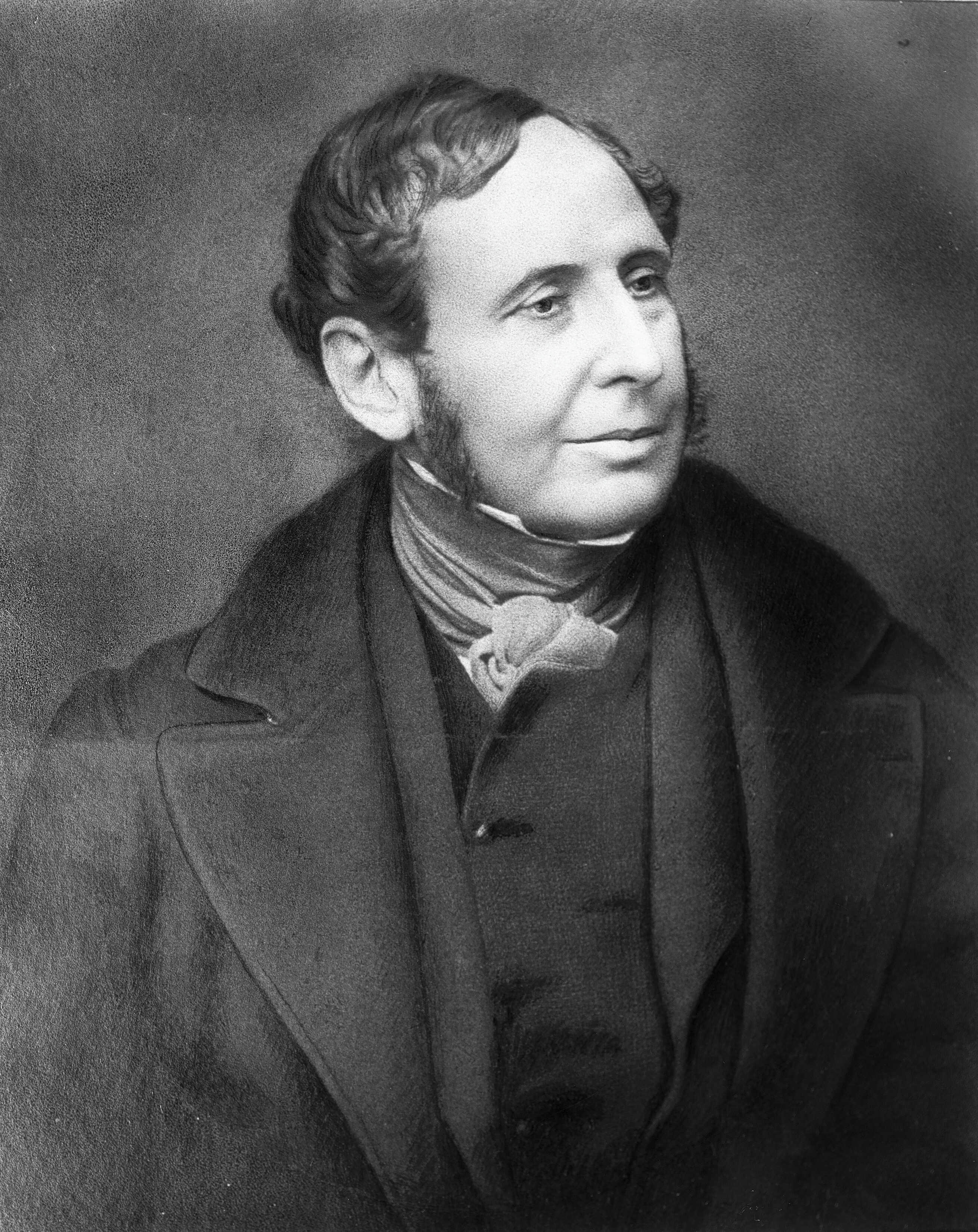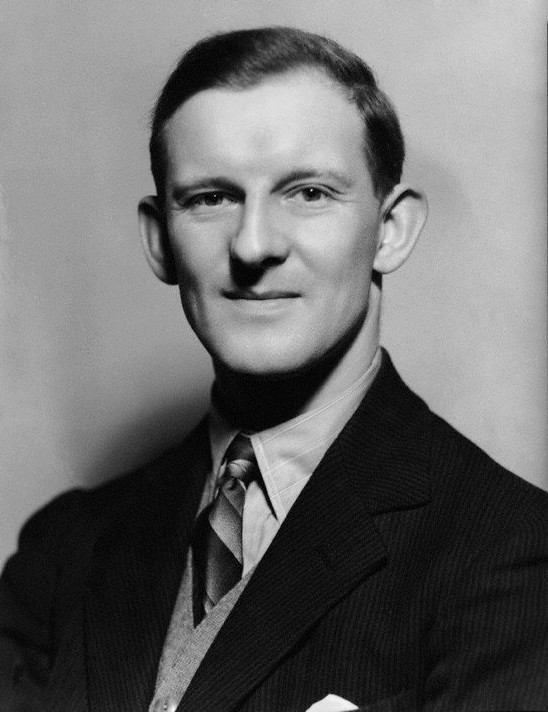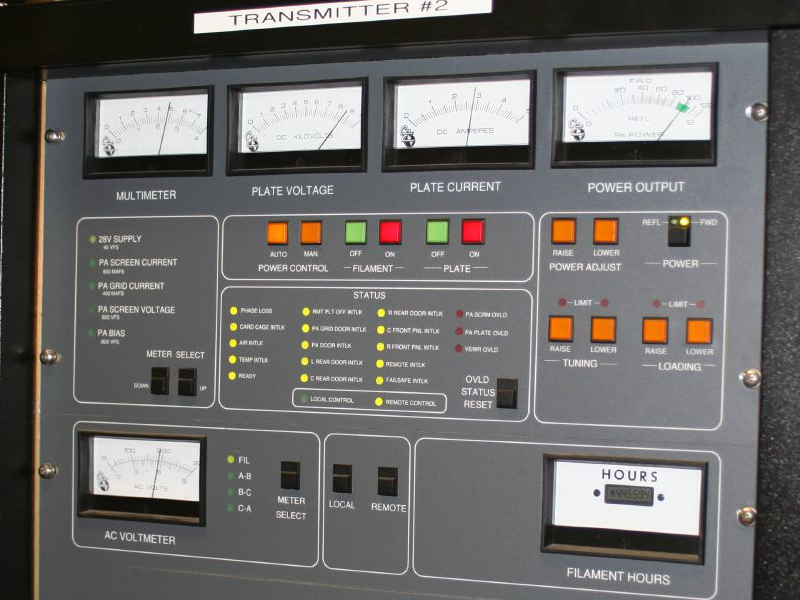|
Robert Watson-Watt
Sir Robert Alexander Watson-Watt (13 April 1892 – 5 December 1973) was a Scottish radio engineer and pioneer of radio direction finding and radar technology. Watt began his career in radio physics with a job at the Met Office, where he began looking for accurate ways to track thunderstorms using the radio waves given off by lightning. This led to the 1920s development of a system later known as high-frequency direction finding (HFDF or "huff-duff"). Although well publicized at the time, the system's enormous military potential was not developed until the late 1930s. Huff-duff allowed operators to determine the location of an enemy radio transmitter in seconds and it became a major part of the network of systems that helped defeat the threat of German U-boats during World War II. It is estimated that huff-duff was used in about a quarter of all attacks on U-boats. In 1935, Watt was asked to comment on reports of a German death ray based on radio. Watt and his assistant A ... [...More Info...] [...Related Items...] OR: [Wikipedia] [Google] [Baidu] |
Brechin
Brechin (; ) is a town and former royal burgh in Angus, Scotland. Traditionally Brechin was described as a city because of its cathedral and its status as the seat of a pre-Scottish Reformation, Reformation Roman Catholic diocese (which continues today as an Bishop, episcopal seat of the Scottish Episcopal Church), but that status has not been officially recognised in the modern era. Nevertheless, the designation is often used, with examples being the City of Brechin and District Community Council, City of Brechin and Area Partnership, City of Brechin Civic Trust and Brechin City F.C., Brechin City Football Club. Kinnaird Castle, Brechin, Kinnaird Castle is nearby. Brechin is located slightly closer to Dundee than Aberdeen on the A90 road, A90 between the cities. It is the fourth largest settlement of Angus. History In the centre of Brechin is a small museum in the Brechin Town House, and an award-winning tourist attraction, the Caledonian Railway (Brechin), Caledonian Railw ... [...More Info...] [...Related Items...] OR: [Wikipedia] [Google] [Baidu] |
Met Office
The Met Office, until November 2000 officially the Meteorological Office, is the United Kingdom's national weather and climate service. It is an executive agency and trading fund of the Department for Science, Innovation and Technology and is led by CEO Penelope Endersby, who took on the role as Chief Executive in December 2018 and is the first woman to do so. The Met Office makes meteorological predictions across all timescales from weather forecasts to climate change. Although an executive agency of the UK Government, the Met Office supports the Scottish Government, Welsh Government and Northern Ireland Executive in their functions and preparations ahead of intense weather and planning for extreme weather alerts. Met Office policies can be used by each government to inform their planning and decision making processes. The Met Office has an office located in the Scottish capital, Edinburgh, and a forecasting centre in Aberdeen in the north–east of Scotland, which are s ... [...More Info...] [...Related Items...] OR: [Wikipedia] [Google] [Baidu] |
Chain Home
Chain Home, or CH for short, was the codename for the ring of coastal early warning radar stations built by the Royal Air Force (RAF) before and during the Second World War to detect and track aircraft. Initially known as RDF, and given the official name Air Ministry Experimental Station Type 1 ( AMES Type 1) in 1940, the radar units were also known as Chain Home for most of their life. Chain Home was the first early warning radar network in the world and the first military radar system to reach operational status. Its effect on the war made it one of the most powerful systems of what became known as the "Wizard War". In late 1934, the Tizard Committee asked radio expert Robert Watson-Watt to comment on the repeated claims of radio death rays and reports suggesting Germany had built some sort of radio weapon. His assistant, Arnold Wilkins, demonstrated that a death ray was impossible but suggested radio could be used for long-range detection. In February 1935, a successful d ... [...More Info...] [...Related Items...] OR: [Wikipedia] [Google] [Baidu] |
American Physical Society
The American Physical Society (APS) is a not-for-profit membership organization of professionals in physics and related disciplines, comprising nearly fifty divisions, sections, and other units. Its mission is the advancement and diffusion of knowledge of physics. It publishes more than a dozen scientific journals, including the prestigious '' Physical Review'' and ''Physical Review Letters'', and organizes more than twenty science meetings each year. It is a member society of the American Institute of Physics. Since January 2021, it is led by chief executive officer Jonathan Bagger. History The American Physical Society was founded on May 20, 1899, when thirty-six physicists gathered at Columbia University for that purpose. They proclaimed the mission of the new Society to be "to advance and diffuse the knowledge of physics", and in one way or another the APS has been at that task ever since. In the early years, virtually the sole activity of the APS was to hold scientific m ... [...More Info...] [...Related Items...] OR: [Wikipedia] [Google] [Baidu] |
Handley Page Heyford
The Handley Page Heyford was a twin-engine biplane bomber designed and produced by the British aircraft manufacturer Handley Page. It holds the distinction of being the last biplane heavy bomber to be operated by the Royal Air Force (RAF). The Heyford was developed in response to Specification B.19/27 for a new heavy night bomber. Much of the design can be attributed to the work of George Volkert, Handley Page's lead designer. Unlike the company's preceding aircraft, the Heyford comprised metal construction instead of wood; it also had an unorthodox arrangement wherein the fuselage was joined to the upper wing rather than the lower one, which gave the aircraft a relatively nose-high orientation while on the ground. Considerable revision of the proposal occurred even after its submission, which was recognised as the Air Ministry's preferred option. A sole prototype, designated ''Handley Page HP.38'', was produced, performing its maiden flight on 12 June 1930 and commencing serv ... [...More Info...] [...Related Items...] OR: [Wikipedia] [Google] [Baidu] |
Short-wave
Shortwave radio is radio transmission using radio frequencies in the shortwave bands (SW). There is no official definition of the band range, but it always includes all of the high frequency band (HF), which extends from 3 to 30 MHz (approximately 100 to 10 metres in wavelength). It lies between the medium frequency band (MF) and the bottom of the VHF band. Radio waves in the shortwave band can be reflected or refracted from a layer of electrically charged atoms in the atmosphere called the ionosphere. Therefore, short waves directed at an angle into the sky can be reflected back to Earth at great distances, beyond the horizon. This is called skywave or "skip" propagation. Thus shortwave radio can be used for communication over very long distances, in contrast to radio waves of higher frequency, which travel in straight lines (line-of-sight propagation) and are generally limited by the visual horizon, about 64 km (40 miles). Shortwave broadcasts of radio pro ... [...More Info...] [...Related Items...] OR: [Wikipedia] [Google] [Baidu] |
Arnold Frederic Wilkins
Arnold Frederic Wilkins OBE (20 February 1907 – 5 August 1985) was a pioneer in developing the use of radar. It was Arnold Wilkins who suggested to his boss, Robert Watson-Watt, that reflected radio waves might be used to detect aircraft, and his idea led to the initial steps in developing ground-to-air radar in the UK. Wilkins also provided all the theoretical calculations to back-up his idea of aircraft detection, and it was his lashed-up system that he used in the Daventry Experiment to demonstrate that his idea would work. With the Daventry experiment, Wilkins successfully detected an aircraft (up to eight miles away) by reflection of radio waves for the first time in history. Early life Born in Chorlton, Cheshire, Wilkins was the son of John Knowles Wilkins of Chester and was educated at Chester City & County School, Manchester University and St John's College, Cambridge. Career Radar He was usually known as 'Skip' Wilkins and worked at the Radio Research Stati ... [...More Info...] [...Related Items...] OR: [Wikipedia] [Google] [Baidu] |
Death Ray
The death ray or death beam is a theoretical particle beam or electromagnetic weapon first theorized around the 1920s and 1930s. Around that time, notable inventors such as Guglielmo Marconi, Nikola Tesla, Harry Grindell Matthews, Edwin R. Scott, Erich Graichen and others claimed to have invented it independently. In 1957, the National Inventors Council was still issuing lists of needed military inventions that included a death ray. While based in fiction, research into energy-based weapons inspired by past speculation has contributed to real-life weapons in use by modern militaries sometimes called a sort of "death ray", such as the United States Navy and its Laser Weapon System (LaWS) deployed in mid-2014. Such armaments are technically known as directed-energy weapons. History In 1923, Edwin R. Scott, an inventor from San Francisco, claimed he was the first to develop a death ray that would destroy human life and bring down planes at a distance. He was born in Detroit, a ... [...More Info...] [...Related Items...] OR: [Wikipedia] [Google] [Baidu] |
World War II
World War II or the Second World War (1 September 1939 – 2 September 1945) was a World war, global conflict between two coalitions: the Allies of World War II, Allies and the Axis powers. World War II by country, Nearly all of the world's countries participated, with many nations mobilising all resources in pursuit of total war. Tanks in World War II, Tanks and Air warfare of World War II, aircraft played major roles, enabling the strategic bombing of cities and delivery of the Atomic bombings of Hiroshima and Nagasaki, first and only nuclear weapons ever used in war. World War II is the List of wars by death toll, deadliest conflict in history, causing World War II casualties, the death of 70 to 85 million people, more than half of whom were civilians. Millions died in genocides, including the Holocaust, and by massacres, starvation, and disease. After the Allied victory, Allied-occupied Germany, Germany, Allied-occupied Austria, Austria, Occupation of Japan, Japan, a ... [...More Info...] [...Related Items...] OR: [Wikipedia] [Google] [Baidu] |
U-boat
U-boats are Submarine#Military, naval submarines operated by Germany, including during the World War I, First and Second World Wars. The term is an Anglicization#Loanwords, anglicized form of the German word , a shortening of (), though the German term refers to any submarine. Austro-Hungarian Navy submarines were also known as U-boats. U-boats are most known for their unrestricted submarine warfare in both world wars, trying to Commerce raiding, disrupt merchant traffic towards the UK and force the UK out of the war. In World War I, Germany intermittently waged unrestricted submarine warfare against the United Kingdom, UK: a first campaign in 1915 was abandoned after strong protests from the US but in 1917 the Germans, facing deadlock on the continent, saw no other option than to resume the campaign in February 1917. The renewed campaign failed to achieve its goal mainly because of the introduction of Convoys in World War I, convoys. Instead the campaign ensured final defeat ... [...More Info...] [...Related Items...] OR: [Wikipedia] [Google] [Baidu] |
Radio Transmitter
In electronics and telecommunications, a radio transmitter or just transmitter (often abbreviated as XMTR or TX in technical documents) is an electronic device which produces radio waves with an antenna with the purpose of signal transmission to a radio receiver. The transmitter itself generates a radio frequency alternating current, which is applied to the antenna. When excited by this alternating current, the antenna radiates radio waves. Transmitters are necessary component parts of all electronic devices that communicate by radio, such as radio (audio) and television broadcasting stations, cell phones, walkie-talkies, wireless computer networks, Bluetooth enabled devices, garage door openers, two-way radios in aircraft, ships, spacecraft, radar sets and navigational beacons. The term ''transmitter'' is usually limited to equipment that generates radio waves for communication purposes; or radiolocation, such as radar and navigational transmitters. Generators of radio ... [...More Info...] [...Related Items...] OR: [Wikipedia] [Google] [Baidu] |
High-frequency Direction Finding
High-frequency direction finding, usually known by its abbreviation HF/DF or nickname huff-duff, is a type of radio direction finder (RDF) introduced in World War II. High frequency (HF) refers to a radio band that can effectively communicate over long distances; for example, between U-boats and their land-based headquarters. HF/DF was primarily used to catch enemy radios while they transmitted, although it was also used to locate friendly aircraft as a navigation aid. The basic technique remains in use as one of the fundamental disciplines of signals intelligence, although typically incorporated into a larger suite of radio systems and radars instead of being a stand-alone system. In earlier RDF systems, the operator mechanically rotated a loop antenna or solenoid and listened for peaks or nulls in the signal to determine the bearing to the transmitter. This took considerable time, on the order of a minute or more. Radio operators could avoid being located by keeping their messag ... [...More Info...] [...Related Items...] OR: [Wikipedia] [Google] [Baidu] |








